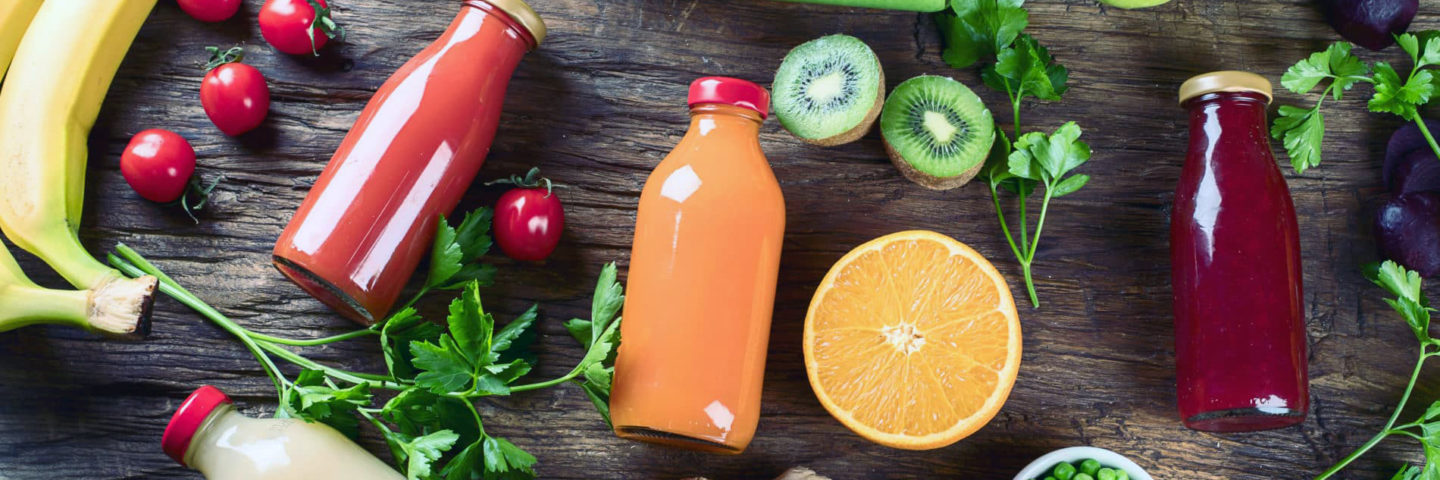
Bioactives In A Bottle
Like fruits and vegetables, 100% juice provides a wealth of valuable bioactives to the American diet. Bioactives, sometimes known as phytonutrients, are plant compounds that have positive effects on human health. In the body they often act as antioxidants or anti-inflammatory agents sweeping out toxins and repairing cells. In juice they are the compounds that give unique color, flavor, taste, and aroma. These include carotenoids, polyphenols such as flavonoids, and more.
When it comes to beverages, research shows that like coffee and tea, fruit and fruit juices have been identified as a major source of bioactives and particularly polyphenol contributors in the US diet. In some cases, juices may even contain more bioactives than the fruit itself, due to the processing of skins and seeds, which are typically not consumed but are concentrated sources of bioactives that remain intact during the juicing process. Other times, the act of breaking down cell walls through the process of crushing and physically extracting the juice may release bound phenolic constitutes which are subsequently transferred to the juice. Both of these processes may increase the amount of bioactives found in juice compared to the edible portion of whole fruit.
Diets rich in plant compounds like polyphenols have been associated with several health benefits including reduced risk of several chronic and degenerative diseases such as cardiovascular disease, diabetes and age-related macular degeneration. Such diets can also have broad beneficial effects on neurocognitive function and exercise performance. For all of these reasons and more, bioactives found in fruit juice may have the potential to positively impact human health.
According to the 2015 Dietary Guidelines, only about 25% of Americans are eating enough fruit, in all forms. Science shows drinking 100% juice is a healthy, nutrient-dense beverage that can not only increase total fruit intake but, when consumed in appropriate amounts, can provide valuable nutrients essential for growth, improve diet quality and can play a role in promoting health, without affecting body weight status.
Keep in mind, that juice is more than just a beverage, it can also be used as an ingredient to replace fat or sugar and add flavor in salad dressings, marinades, sauces, and baked goods.
For more information on bioactive visit the latest research section of SipSmarter.org. Here you can also find interesting and creative recipes with juice.
REFERENCES
-
Ho KKHY, Ferruzzi MG and Wightman JD. (2019). Potential health benefits of (poly)phenols derived from fruit and 100% fruit juice. Nutrition Reviews. 2019: Sep 17. doi: 10.1093/nutrit/nuz041
-
Clemens R, Drewnowski A, Ferruzzi MG, et al. Squeezing fact from fiction about 100% fruit juice. Advances in Nutrition. 2015;6:236S–243S.
-
Manach C, Scalbert A, Morand C, Rémésy C, Jiménez L. Polyphenols: food sources and bioavailability. American Journal of Clinical Nutrition 2004;79:727–47.
-
Gil-Izquierdo A, Gil MI, Ferreres F. Effect of processing techniques at industrial scale on orange juice antioxidant and beneficial health compounds. Journal of Agricultural and Food Chemistry 2002;50:5107–14.
-
Hyson, Dianne A. (2015). A Review and Critical Analysis of the Scientific Literature Related to 100% Fruit Juice and Human Health. Advances in Nutrition, 6, (1), 37–51. doi: 10.3945/an.114.005728


